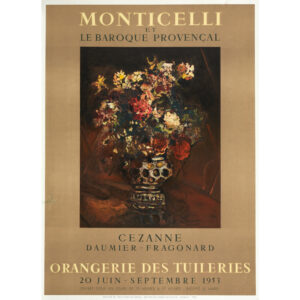Cézanne, Paul
Little recognized during his lifetime, Paul Cézanne is today considered the father of modern art. His work on composition and his gradual move towards abstraction made him a major influence on twentieth-century artists. Read the biography
2 results displayedSortedfrom newest to oldest
-

Twelve masterpieces of modern French painting
Various Artists
60€
-

Tribute to Cézanne
Paul Cézanne
40€
Biography of Paul Cézanne
Born in Aix-en-Provence in 1839, Paul Cézanne studied law before turning to painting. A friend of Émile Zola since high school, he joined him in Paris in 1861 to work in a studio. He failed to gain admission to the Beaux-Arts, but continued to work on his painting, which evolved from a rather tortured style(La Douleur, L'Autopsie) to a more refined composition of still lifes and landscapes. In 1872, he moved in with Camille Pissaro, with whom he worked on color, tone and light, which led him to present three works at the first Impressionist exhibition in 1874.
In the 1880s, he visited Zola, Pierre-Auguste Renoir and Claude Monet, and tended towards abstraction. He returned to Provence to depict its landscapes, and his style asserted itself with paintings such as Grandes Baigneuses, as well as the series of works he dedicated to Montagne Sainte Victoire. Despite this, Cézanne remained rather isolated and unappreciated by his contemporaries, and exhibited little during his lifetime. Three years before his death, however, he decided to exhibit at the 1903 Salon d'Automne, and the quality of the many works he left behind was recognized after his death. Considered today as the father of modern art and the precursor of Post-Impressionism and Cubism, he was a major influence on many artists who followed him, notably Pablo Picasso and Henri Matisse.
You can see some of his physical works in our our art gallery in Paris .
